Your teen drops their bag, says “I’m fine,” then vanishes to their room. The hoodie stays on. Dinner gets quiet. You know that “fine” is code, and your gut starts to ping.
Bullying is not one bad day. It is repeated hurtful acts that chip at well-being. This kind of bullying can be subtle at first, then loud. The signs of bullying can show up as mood swings, tummy aches before school, missing items, or a sudden fear of group chats.
Here is the twist many families notice. Kids get good at hiding their worries about bullying with humor, sleep, or silence. Parents get good at guessing. That guesswork breeds stress. We need to slow it down, listen, and make it safe to talk.
Start small. Sit with them, phones away, and say, “I care, I’m here.” Keep your voice calm. Ask simple questions, then wait. No judging. No quick fixes. Share one feeling of your own to model honesty.
At home, connection helps more than any lecture. Thank them for talking, even if it is two words. Use gentle humor to cut tension. Offer physical comfort they like, maybe holding hands or a long hug. Those cues tell their nervous system, you are safe with me.
If you parent with a partner, team up. Hold hands at the table, present a united front, and trade one gratitude each night. Plan a short walk, just the two of you, to check in. Strong couples handle hard talks better, including ones about intimacy, needs, and stress. That steadiness shows kids what safe love looks like.
In this piece, we will point out clear signs to watch, at school and at home. We will share what to say, what not to say, and when to get help. Think of it as a guide to spot early warning signs, protect your child, and guard your bond. Because noticing early can change the story.
Emotional Signs of Bullying That Hurt Deep Inside
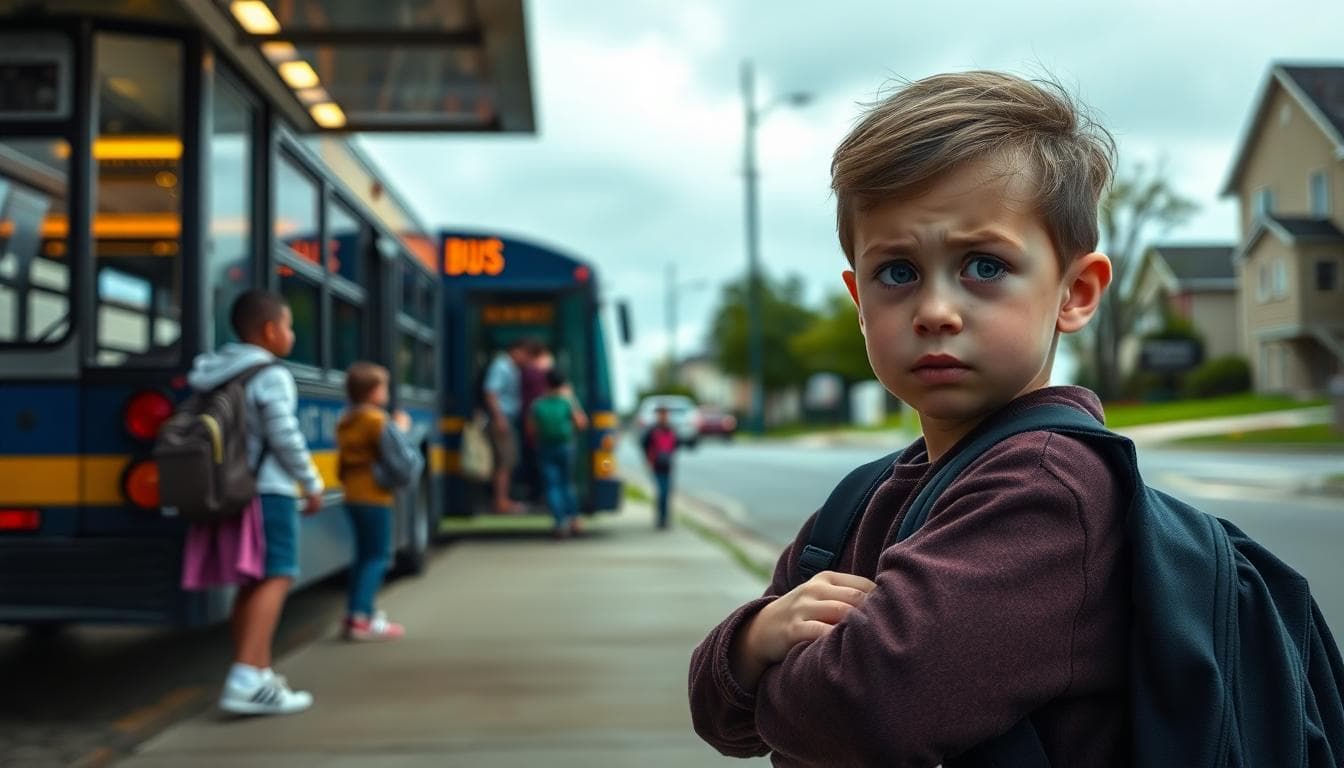
You can spot the emotional signs of bullying if you slow down and watch the tiny shifts. The quiet pullback. The flat voice. The joke that lands like a shield. These moments build a map of pain that many kids and adults carry in silence. Fear hides in plain sight. So does shame.
Here is the goal. Notice the pattern, name it with care, and stay close. Your calm voice and open posture help their body feel safe. That safety is the bridge to truth.
Anxiety and Fear in Everyday Moments
A sudden fear of school or work can sneak up in small, daily scenes. A child lingers at the bus stop, fingers locked on the strap. The bus pulls up, and they freeze. A college student scrolls in bed, then asks for a ride, again. An employee sits in the car, breathes shallow, and waits five extra minutes. These are not lazy moments. They are survival moves marked by anxiety or stress.
Watch for:
- New stomach aches before school or shifts
- Trouble sleeping on Sunday nights
- Startling at notifications or group chat pings
- Requests to be picked up early, often
These are common signs of bullying tied to fear. They show up in kids and adults. If you want a quick primer on what this can look like during the week, see this clear roundup on fear of school and related mood shifts in kids from Brightline’s guide on early red flags: 7 signs that could mean your child is being bullied.
Try a simple script at the bus stop or before work. “I see you are tense. Want company for a minute?” Keep your tone soft. Offer a hand. If they take it, hold steady. Physical touch, like holding hands, cues safety and lowers stress.
Humor helps when used with care. A light line can open the door without pressure. “We can face the bus like brave turtles. Slow, but steady.” If they smirk, you have room to talk. If they do not, you still gave warmth.
This fear shows up in couples too. One partner may feel unsafe sharing, so they go quiet or change the subject. That is also a sign. Try this rhythm at dinner: sit close, hold hands for thirty seconds, then trade one fear and one small win. No fixing, just mirrors. “I hear you. That sounds hard.” Trust grows in that simple loop.
If fear keeps rising, or panic hits often, reach out for help. A clinician can map the pattern and offer tools that stick.
Low Self-Esteem and Negative Thoughts
Bullying talks in your head long after the school bell, often leading to feeling sad or unhappy. It says you are not enough. It says no one wants you. It repeats the worst line you heard that week. Over time, that chorus drains confidence and dampens drive. Research and clinical reports point to a clear link between bullying and low self-esteem, with kids often seeing themselves as less worthy than peers. For a grounded overview, see McLean Hospital’s primer on the emotional cost of bullying: The Emotional Cost of Bullying on Kids and Teens.
Here is the odd twist. Bullies often pick on strengths. The singer gets mocked for “trying too hard.” The fast runner gets called a show-off. The kind kid gets labeled soft. Why? Because strength draws eyes, and power that harms prefers control. Naming that pattern can be freeing. It reframes the story. The pain is real, and the target is not the problem.
Help shift the inner voice:
- Replace “I am the problem” with “This is a problem I face.”
- Keep a two-line log: “What happened” and “What I did well.”
- Share one skill you admire about them, daily.
In relationships, low self-worth can mute needs. Couples tell us they avoid hard talks to keep the peace, then grow apart. Try normalizing needs with a standing check-in. Ten minutes, same time each week. Trade prompts like, “What did you need more of?” and “What helped this week?” Use a bit of humor to break the ice. “Tonight’s menu includes honesty and dessert.” Keep eye contact. Hold hands if that feels right.
A brief story. A teen I met wanted to quit choir after a classmate mocked her voice. Her mom and dad started a nightly “two notes and a laugh.” Two notes she sang with them, one joke by anyone. They made that tiny ritual stick. Months later, the teen tried out for a solo. The mockery did not vanish, but her sense of self grew louder.
Your steady presence matters. Gratitude helps it last. Thank them for any share, even a shrug. Keep the door open. Repeat that you will listen without judgment. That promise, over time, becomes a safe place to stand.
Behavioral Changes Pointing to Bullying at School or Work
Behavior shows the early signs of bullying before words do. You see the pullback from plans. You hear the “I’m tired” that shows up every Friday. Work bags stay zipped. Lunch boxes come home full. These shifts often start small, then stack into a pattern.
Pay attention to what changes, not just what hurts. Patterns of avoidance, sleep swings, and skipped meals tell a story. Your steady presence, plus small daily rituals, helps them feel safe enough to talk. Stay warm. Use humor with care. Hold a hand when it helps.
Warning signs listed by StopBullying.gov align with what many families see at home, like sleep issues, appetite changes, and frequent “sick days.” Trust your gut. Look for change over time.
Skipping School or Calling in Sick Often
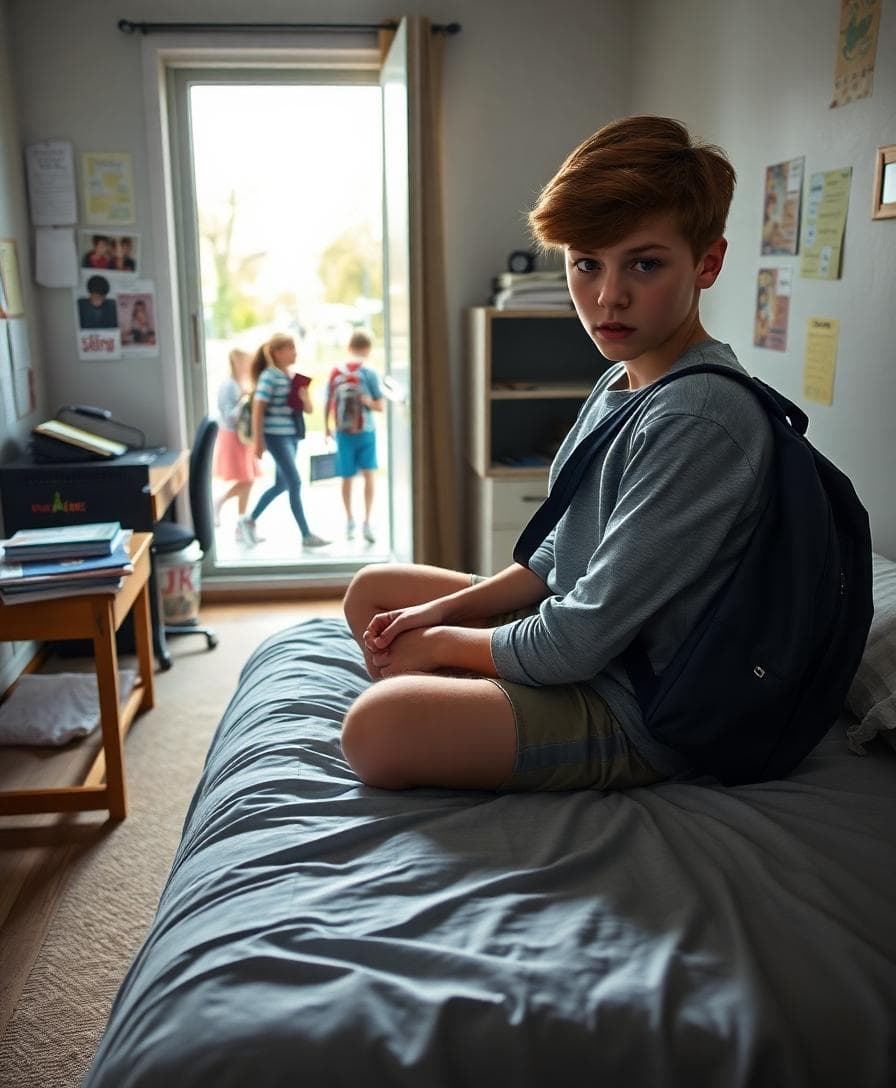
A new pattern of sick days is not random. It can be a shield. Kids and adults avoid places that hurt. The body often leads, with stomach aches, headaches, or a sudden need to “rest.” In the context of school or work, repeated absences are common signs of bullying, often manifesting as a student avoiding school.
A quick story. A teen told his parents he needed to study all weekend. He even made a color-coded schedule. It looked impressive. He stayed in sweatpants from Friday night to Sunday night. He “studied,” or so he said. No friends came by. No practices. He skipped one meal, then two. His parents heard the silence first. Then they noticed the bag that never left the floor.
Avoidance can be smart in the short term. It gives control. Over time, it shrinks a life. School refusal is a key part of these avoidance patterns. Here is what to watch:
- Frequent “I feel sick” before the bus or start time
- Long bathroom breaks right before leaving
- Last-minute cancellations, often with vague reasons
- A sudden stop to clubs, sports, or breaks with coworkers
Respond with calm and care. Try a simple line: “I notice you are staying home more. I care about what is going on.” Keep your voice gentle. Sit nearby. Offer a hand or a long hug if they want it. Touch can steady a racing mind.
Make home a safe landing. Then add connection that does not feel like a lecture. Families can try one of these:
- The 20-minute reset: a slow walk, phones away, holding hands if that helps
- A “try-something-new” Sunday: mini golf, a new soup recipe, or a silly board game
- “Tag-team courage”: one small outing, together, with a reward on the way back
Couples can feel this too. One partner starts “working late” often. They avoid a toxic peer or boss. Use teamwork to face this. Plan a weekly coffee date near work. Walk in together when it feels safe. Share one fear and one need. Keep it simple. “I need you to check in at lunch.” “I need a hug before I go in.” Those asks build trust.
If absences keep rising, loop in support. A school counselor or HR partner can help map steps. Bullying can lead to declining grades as a result of distraction or stress from the ordeal. For a clear list of early clues, see this overview of common shifts like grade drops and attendance changes from Connections Academy.
Shifts in Habits Like Eating Less or Sleeping Poorly

Sleep and appetite are honest. They tell you when the nervous system is on high alert. Nightmares, long wake-ups, or skipped breakfast point to stress. Many families name these as early signs of bullying, including trouble sleeping.
What this looks like:
- Nightmares about school, group chats, or a hallway scene
- Late bedtimes, early wake-ups, or both
- Pushing food around, then “not hungry”
- Snacking at night and skipping meals by day
Stress pulls appetite down. It can also spike cravings. Either shift can be a red flag. Offer care, not pressure. Try, “Food can be hard when stress is high. Can I sit with you while you eat a little?” Keep the table calm. Humor helps. A soft joke can break the freeze.
Use touch if welcome. A hug before bed can settle nerves. Try hand on shoulder, two slow breaths together, then lights out. Keep a steady routine. Bodies like predictability.
Practical moves that help:
- Create a simple sleep plan: same bedtime, no phones 30 minutes prior, low light
- Offer easy food: smoothies, soup, toast with eggs, yogurt with fruit
- Add predictability: post a short nightly plan on the fridge
For couples, food and sleep shifts can cause friction. One partner raids the pantry at midnight. The other counts the ceiling tiles at 3 a.m. Treat it as a shared problem, not a flaw. Try a “goodnight huddle.” Hold hands. Trade two lines each: “One worry today,” then “One gratitude.” Gratitude is not fluff. It cues safety.
If you see both sleep issues and appetite loss, slow the week down. Cancel one plan. Add one soothing thing together. Maybe a short yoga video. Maybe a slow drive with music and no talk. Let the nervous system reset.
If nightmares are graphic or frequent, or weight drops fast, seek care. Your pediatrician or primary care clinician can screen and refer. In many cases, added support helps restore sleep and steady eating.
The thread through all of this is connection. Bullying isolates. Your presence builds a bridge back to safety. Offer warmth, curiosity, and a steady hand. Small, repeated moments of contact change how the brain reads risk. They also tell your loved one, you are not alone.
Physical Signs of Bullying You Can See Right Away
You often see the first signs of bullying on the skin or in a backpack. A bruise with no story. A cracked phone. A lunchbox that comes home empty, again. These clues matter. They point to risk in a place your child should feel safe. Slow down, look closely, and stay calm. Your steady voice and presence can turn a scared moment into a safe one.
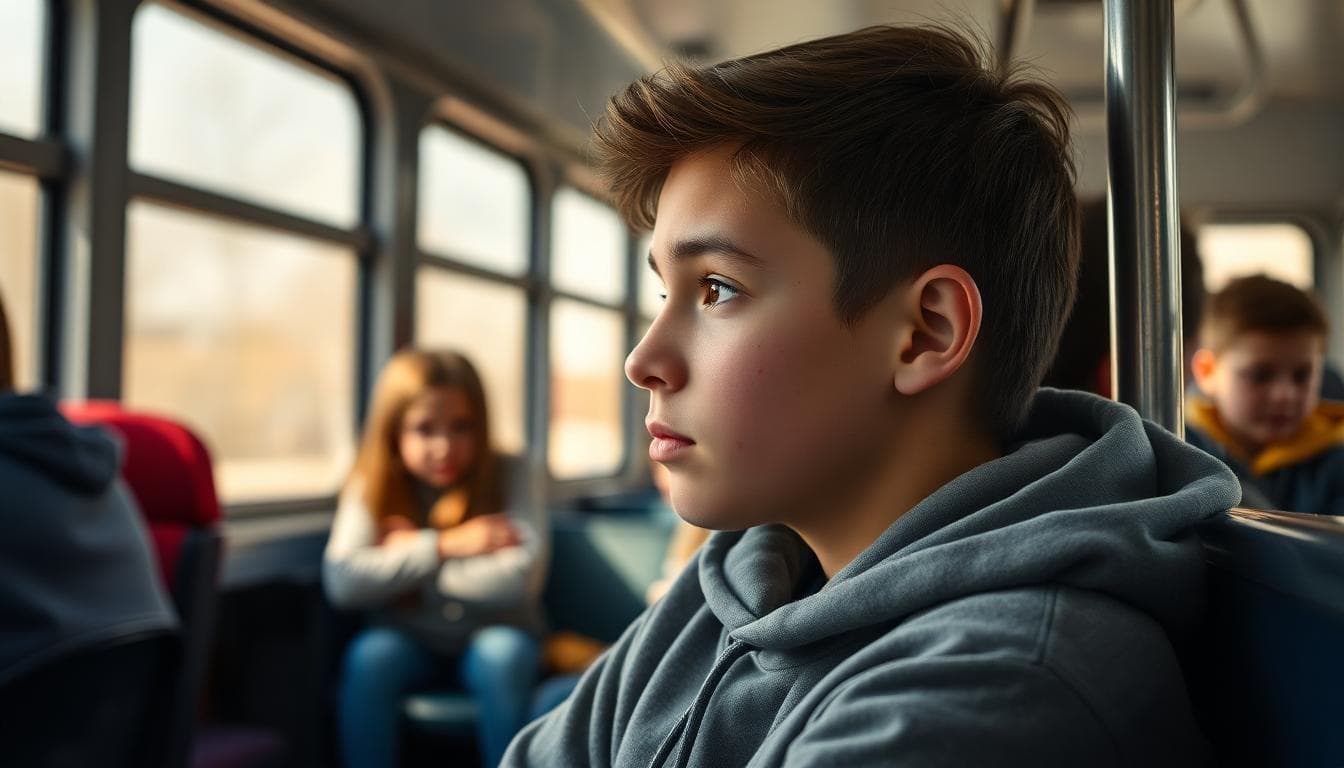 Image created with AI
Image created with AI
A quick check helps you spot what changed. Unexplained injuries and missing items often appear together. National guidance lists both as common signs of bullying in kids and teens, which helps parents act sooner rather than later. See the summary of warning signs from StopBullying.gov.
Here is the heart of it. Notice. Ask with care. Hold space, not court. When kids trust your response, they share more, and earlier.
Bruises or Cuts Without a Clear Story
A fresh bruise shows up on a cheek or forearm. The explanation shifts, or it is vague. “I bumped into a desk.” Then “it was gym.” Then no answer at all. Small marks can hide under sleeves or hair. Skin tells a story the voice is not ready to share.
Try a soft approach. Sit close and say, “I noticed your bruise. Are you safe with friends?” Short, direct, and kind. Your tone matters more than the words. Keep your face neutral. Offer a hand to hold if they want it. Physical touch can steady fear and shame.
If they avoid eye contact, do not push. Stay near and let the silence breathe. You can add a gentle bridge. “Your safety in all relationships matters to me.” Yes, that includes friendships and dating. It also includes online ties. Invite open talk about safety and desires in relationships. Kids learn that their needs count, including the need to feel safe when touched or teased. That lesson protects them later, with partners and peers.
What to watch:
- Unexplained bruises or cuts on the same areas, like arms or ribs
- Scratches that show up after school, not on weekends
- Cuts explained in rushed or shifting ways
- Flinching at hugs or playful taps
- Signs of damaging clothing, like torn sleeves after school
A brief scene. A teen I worked with wore long sleeves in June. He said the class AC was “too cold.” His mom asked once, then backed off. That night, she made tea and sat on his floor. “I care about your safety,” she said. “Did someone hurt you?” He nodded, then cried hard. She held his hand. No lecture. Just a long, tight hold. That touch did the heavy lifting.
Use warmth to keep the door open:
- Thank them for any share, even tiny ones
- Offer choices, like “Talk now or after dinner?”
- Keep humor gentle, never about the injury
If you see new marks and rising fear, seek help. A school counselor or pediatrician can guide next steps. A clear list of physical and behavior signs, like bruises and sleep changes, is outlined here for quick review: Signs of bullying in children and teenagers.
Couples note the strain too. One partner worries, the other tries to fix fast. Pause together. Hold hands for thirty seconds. Trade one fear and one need. “I need you to sit with me while we plan.” “I need a hug before we call the school.” Honesty and touch build trust when stress runs high.
Missing or Broken Personal Stuff
Missing lunch money is easy to shrug off. So is a cracked case, a snapped pencil box, or earbuds that vanish every Friday. But repeat losses point to pressure, not bad luck. Kids learn to pay a “toll” just to get through a hallway. They hand over snacks or cash to avoid a shove. This is a classic sign of bullying, and it often shows up before anyone talks about it.
 Image created with AI
Image created with AI
Common patterns to note:
- Losing belongings tied to school hours
- Lunch that vanishes, with no trade in sight
- Borrowed gear that “walks away” and never returns
- Asking for money more often than usual
- Unexplained money going missing from pockets or wallets
Start simple and clear. “I see your headphones broke again. Did someone take or grab them?” Use a calm tone. Sit shoulder to shoulder. Let them answer without rush. If they freeze, shift to a safer frame. “You do not deserve to pay to feel safe. I will help.” That line affirms worth and sets a boundary.
Now, help repair trust after the incident. Gratitude is your glue. Thank them for sharing, then name one thing they did well. “You told me today. That took guts.” When kids hear gratitude, they feel seen, and shame drops. That opens space to plan.
Steps that protect and rebuild:
- Make a record: dates, items, names if known
- Loop in school or work supports, like a counselor or HR
- Change routes or timing in hallways if needed
- Set up check-ins: a quick text before lunch and after last bell
- Offer a small replacement item fast, to restore control
Add repair rituals at home. Try a “gear check” with humor. Lay out items, count them together, then trade one gratitude each. “Thanks for trusting me with this.” Laughter helps the nervous system reset. Keep it light, not snarky.
Partners can support each other too. Plan a short walk after dinner. No screens, just ten minutes. Hold hands. Talk about needs and desires for safety in your own relationship. Safe love starts at home, where needs are named and respected. That model teaches kids how healthy care feels.
If missing items continue or fear spikes, escalate. Meet with school leads. Ask for safer routes, adult presence during passing periods, and a plan for accountability. National tip sheets list these tangible signs as common early flags, including lost or destroyed belongings and cash that goes missing. Keep that list handy when you talk with staff. See the quick reference from StopBullying.gov on warning signs.
The bottom line is steady and kind. Name what you see. Offer touch and time. Use gratitude to heal small breaks in trust. Those moves help your child talk sooner, and they help you act with clarity when the signs of bullying show up on skin, backpacks, and faces you love.
Social Signs of Bullying in Relationships and Groups
Bullying does not always leave a bruise. It often shows up in social shifts that feel small at first, including key relationship signs like plans drying up or replies slowing to a trickle. A seat stays empty at lunch. These are quiet signs of bullying in groups and close bonds, such as being excluded from conversations. They matter. They tell you someone is losing safety where they should feel held.
 Image created with AI
Image created with AI
Social bullying can look like exclusion, subtle put-downs, or public silence after a joke. It can also look polite, which makes it hard to name—especially with cyberbullying, where harm can be online through group chats or posts, particularly in college and young adult contexts. National guidance lists tactics such as leaving someone out on purpose or telling others not to be friends with them. See the clear summary of social tactics in What Is Bullying. Relationship science adds a simple lens. Any pattern that shames, isolates, or controls is not love. It is a power move.
A quick scene. A teen stops getting invites to the group chat. Her name pops up only when someone needs notes. At home, she goes quiet and says she is tired. That is not drama. That is pain. Your calm presence can be the life raft.
Pulling Away from Friends or Family
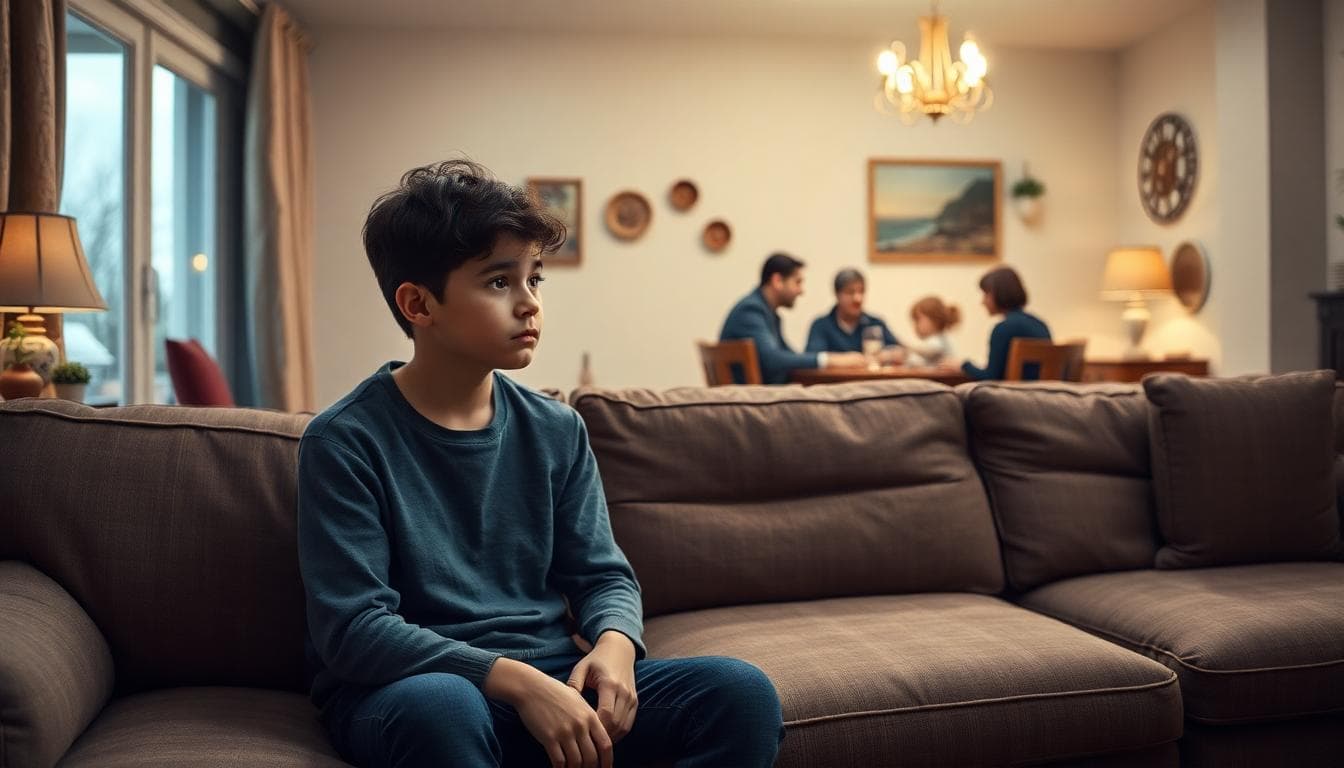 Image created with AI
Image created with AI
A sudden retreat often signals harm in the social circle, leading to avoiding social situations like skipping rides or calls. One day they skip the ride. Next week they skip the call. Before long, weekends are quiet. This is how isolation sets in, leaving someone feeling lonely and isolated.
What you might see:
- New habits of eating alone or staying in their room
- Short answers about plans or people
- Silence after group chats or club meetings
- Relief when plans get canceled
Start with non-judgmental listening. Sit close. Keep your voice soft. Try, “I notice you are spending more time alone. I am here to listen.” Then wait. No rushing, no fix-it speech. Offer a hand to hold. Touch says, you are safe with me.
Gently name what you see. “It looks like you were left out.” Do not guess motives. Stay with facts and feelings. A short line helps: “That hurts. I get it.” Gratitude builds trust, so thank them for sharing, even a few words.
Small steps help rebuild social safety:
- Plan a low-pressure outing, like a walk or a short drive
- Invite one kind friend over for a calm hangout
- Add a daily ritual, such as a tea check-in or a two-song dance
Humor can lower the guard when used with care. Try a light line that is not sharp. “Tonight’s plan: couch, snacks, and zero drama.” If they smile, good. If not, you still gave warmth.
If you want a fuller list of relationship warning signs linked to bullying, see this practical guide from PREVNet. It highlights patterns like feeling lonely at school and having few friends, which match what parents and partners often notice first.
Trouble in Close Bonds Like with Partners
Adult bullying hides in plain sight. It shows up as cold jokes, icy silence, or public “teasing” that is not kind. Plans get controlled. Friends get screened. Sex becomes a bargaining chip. The target shrinks to avoid a fight. This is social control inside the relationship.
What to watch for in couples:
- Put-downs dressed as humor, often in front of others
- Rules about who you can see or text
- Withholding affection to punish or control
- Apologies that come with new demands
Try a small scene. Two partners walk into a party. One goes stiff after a snide jab about their outfit. The room keeps moving. The hurt sticks. The kinder move is simple. Step aside. Hold hands. Say, “That stung. I am on your team.” Then stay close. The hand-hold grounds the body and says, you matter here.
How to protect the bond:
- Set a weekly check-in. Ten minutes. Phones away. Hold hands if welcome.
- Use the “I feel, I need” script. “I feel small when you joke about me. I need respect and care.”
- Name desires without shame. Talk openly about touch, intimacy, and what feels good.
- Add micro-gratitudes. “Thanks for seeing me there.” Small praise feeds trust.
If social pressure or control keeps rising, widen the circle. Talk with a therapist or a trusted friend. If you feel unsafe, seek support right away. This is not about blame. It is about your safety in the relationship and in the wider group that surrounds it.
Here is the heart of it. Social harm thrives in silence. Kind attention breaks the spell. You do not need perfect words. You need presence, steady care, a little humor, and sometimes a warm hand to hold. Those moves help you spot the signs of bullying and protect the ties that keep us well.
How to Spot and Stop Bullying in Different Life Stages
Bullying changes with age, but the harm stays familiar. The signs of bullying echo through school years, college halls, jobs, and even senior centers. What helps across the board is simple. Notice the shift, name it kindly, and act with calm. Presence, gratitude, and a little humor can make the hardest talk feel possible.
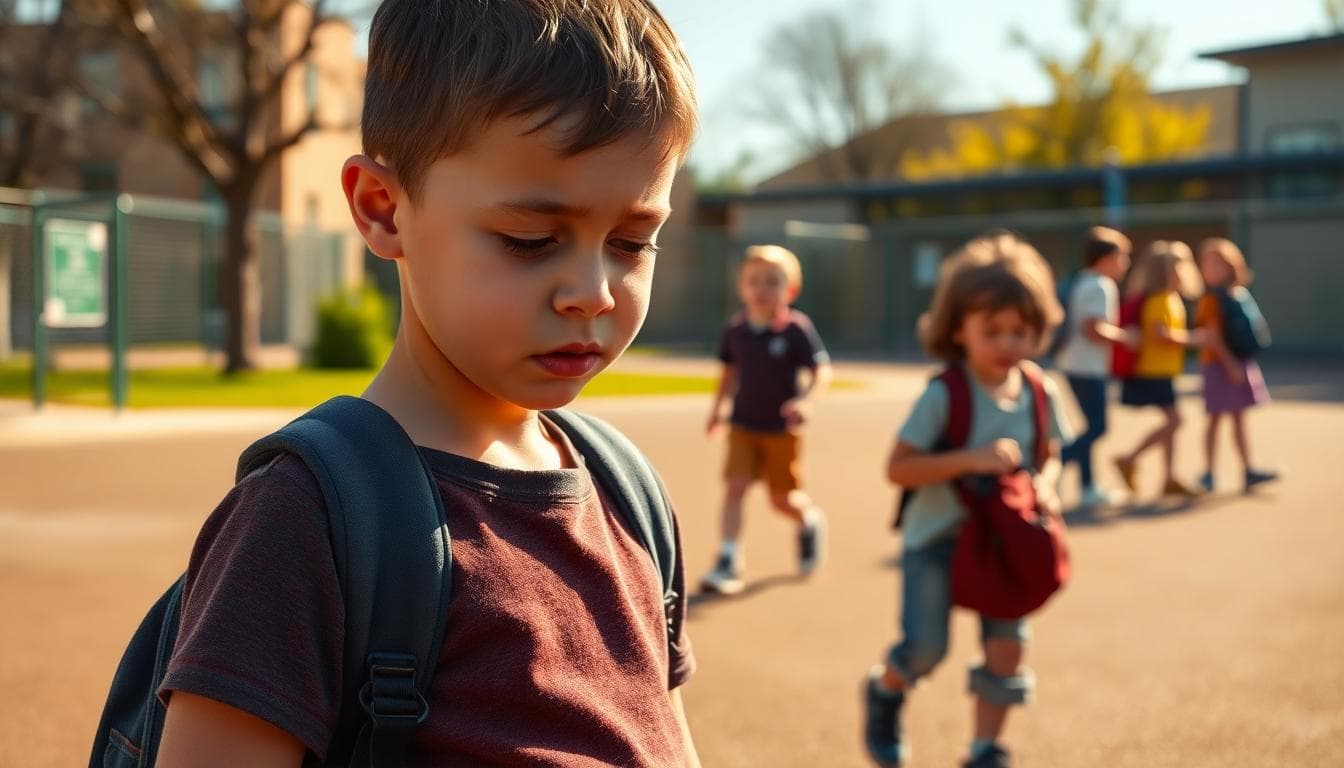 Image created with AI
Image created with AI
I once met a parent who used a “two-hand rule.” When her son looked small, she reached out two hands. One to hold. One to point toward help. He started to talk. That small ritual became their anchor.
Early Childhood and Elementary School
Early signs live in the body. Kids refuse drop-off. They hide in corners at pick-up. You may see stomach aches, clinginess, and quiet tears. They keep backpacks close. They hoard snacks or give them away fast. These warning signs of bullying can signal a child being victimized before words even form.
What to watch:
- Unexplained bruises or ripped clothes
- Missing items that vanish at school
- Nightmares about classmates or recess
- Sudden fear of group games
What to say:
- “I see you are worried. I am right here.”
- “No one has the right to scare you.”
- “We will face this together.”
What to do:
- Ask the teacher for eyes on recess and hallways.
- Request seating near kind peers.
- Practice a simple line: “Stop. I need space.”
- Role-play eye contact and a clear voice.
- Hold hands while you practice. Touch settles nerves.
For a quick reference on early red flags, see the concise guide on warning signs for bullying. It matches what many parents see first.
Middle School
Power shifts show up in social moves. Group chats turn sharp. Kids get iced out. There are inside jokes that cut. Grades dip. Sleep gets choppy. Lunch goes quiet. Sometimes, a child bullying others emerges as a response to their own frustrations, showing quick to anger or bursts of aggression.
What to watch:
- “Teasing” that feels mean, not playful
- Late-night scrolling to monitor chats
- Sudden drop from clubs or sports
- Missing cash, snacks, or gear
What to say:
- “I notice the shift. I am on your side.”
- “You deserve friends who are safe.”
- “Want me to sit with you while we sort this?”
What to do:
- Save screenshots. Keep a log.
- Adjust routes between classes, if needed.
- Ask for a supervised lunch table.
- Add a nightly reset: tea, two breaths, one gratitude.
For a balanced overview with signs to track and steps to take, see UNICEF’s summary on what bullying is and how to stop it.
High School
Control gets subtle. Image matters more. Put-downs dress up as jokes. High-status kids set the tone. Targets go quiet to survive. You may see secret absences, a hoodie that never comes off, or new panic about “being seen.” Motivation fades, leaving them not excited about things they once loved, alongside declining grades.
 Image created with AI
Image created with AI
What to watch:
- Grades swing, motivation fades
- Major friend shifts with vague stories
- Constant phone checks for posts or tags
- Weight changes, sleep crashes, or big mood dips
What to say:
- “Your safety is my top job.”
- “You did nothing to earn this.”
- “Talk now or later, your choice. I will be here.”
What to do:
- Meet with a counselor to plan safe spaces. Parents may be overprotective in these moments, but channeling that into structured support builds trust.
- Ask for hall passes during peak times.
- Build a support triangle: you, one safe adult, one safe peer.
- Keep shared rituals. Short walks. Music in the car. A long hug.
The CDC gives a clear, updated definition and context that helps frame next steps. See Bullying | Youth Violence Prevention.
College and Young Adults
Bullying shifts to roommate power plays, team hazing, and club politics. Online pile-ons can be relentless. Students often hide it to look strong. They pull away from class and skip labs. They sleep at odd hours.
What to watch:
- Room changes or couch surfing
- Dropped courses with no clear reason
- Social media harassment that spikes on weekends
- Avoidance of shared bathrooms or lounges
What to say:
- “You are not alone in this.”
- “You do not need to fix it by yourself.”
- “Let’s make a plan that keeps you safe.”
What to do:
- Contact the RA or residence life. Ask for housing support.
- Use campus counseling. Book the first open slot.
- Report hazing. Keep dates and messages.
- Create a daily body reset: food with a friend, a walk, a short workout.
A quick note on intimacy. College dating can mask control. Normalize talks about needs and desires. “I need respect around my body and my time.” That line belongs in every relationship.
Workplace and Early Career
Adults get bullied too. It shows up as public shaming, blocked projects, and rumor loops. Targets stop speaking up. They avoid the break room. They get sick more. The signs of bullying at work look like withdrawal, stress, and a slow loss of voice.
What to watch:
- Meetings where one person gets mocked or iced out
- “Jokes” that only cut one way
- Tasks pulled with no notice
- Sudden poor reviews without clear feedback
What to say to yourself or a partner:
- “This behavior is not normal, and not okay.”
- “I deserve to be safe at work.”
- “Let’s plan support, not just grit.”
What to do:
- Document dates, names, quotes, outcomes.
- Share concerns with HR or a trusted manager.
- Bring a colleague to key meetings.
- Set a weekly couple check-in. Hold hands. Trade one fear and one need.
- Use micro-gratitudes at home to restore respect and ease.
For parents supporting a working teen or young adult, the Bullying Resource Center offers quick guidance on warning signs and steps to take.
Older Adults and Seniors
Bullying happens in senior housing, clubs, and families. It looks like seat saving that excludes people, mocking in common rooms, or controlling rides and access to meals. Targets go silent. They stop joining bingo. They eat alone.
What to watch:
- Fear about dining hours or seating
- Withheld mail or messages
- Loud “jokes” about hearing, walking, or memory
- Sudden money issues or missing items
What to say:
- “You deserve kindness here.”
- “Tell me what happens near meals or rides.”
- “I will go with you and we will ask for help.”
What to do:
- Speak with facility staff and program leads.
- Ask for seating support and staff presence.
- Document incidents with dates and names.
- Rebuild social safety. One friend. One daily group. One calm routine.
The Short List: Spot Fast, Act Steady
These moves help across life stages. Use what fits, skip what does not.
- Name the change: “I notice you are quiet after work.”
- Offer your body: sit close, hold hands, steady your breath.
- Use humor with care: gentle, never at their expense.
- Express gratitude: “Thank you for telling me.”
- Plan one next step: a call, a meeting, a small boundary.
- Keep receipts: screenshots, dates, places, people.
- Build a ritual: a nightly tea, a short walk, a quick cuddle.
- Talk about needs and desires. Say what helps. Ask for what you want.
If you want a parent-facing snapshot of warning signs to keep handy, MBF’s guide on signs your child may be the target of bullying is clear and supportive.
A final scene. A couple sat with their ninth grader after a rough week. No lecture. Just hands linked across the table. “We will stand with you, every step,” the parent said. They held that promise the next morning and the next. That is how trust grows back. That is how harm loses power.
Conclusion
The signs rarely shout. They drift in through quiet rooms, tense shoulders, and Sunday night stomach aches. You have seen them here, laid out in plain sight. Mood swings, sleep shifts, missing items, bruises, social retreat, and the silent sting of online exile. Each one is a breadcrumb that leads to a hurt we can stop.
Here is what changes the story. Sit close, phones down, and listen without judgment. Say, “I am here, and I will stay.” Hold a hand if they want it. Add gentle humor to ease the body, not to dodge the pain. Thank them for trusting you, even if they only give two words. Presence builds trust and loyalty. Gratitude makes it stick.
A quick scene that still rings true. A teen kept the hoodie up and skipped lunch all week. Sunday night hit, and the stomach aches came back on cue. The parents tried a 10-minute couch check. Same time, every night. They held hands for the first thirty seconds. Then they traded one worry and one small win. No lectures. Just steady care. By week three, the teen admitted the bullying in the locker hall was rough. By week four, they had a plan with school staff, and a friend to walk with.
Do the same at home. Schedule your talks. Put them on the calendar like soccer or payroll. Try a weekly couple reset too. Name needs and desires, including intimacy and touch. Say what feels safe and what does not. Go on a short walk. Try a new class or a silly card game. Keep small rituals that say, we matter.
If bullying persists and the signs keep showing up, bring in support. A counselor, a teacher, an HR lead. You are not alone in this.
Name what you see, offer warmth, and move one step at a time when spotting the signs of bullying. That is how safety returns. That is how bonds grow stronger than the harm.


